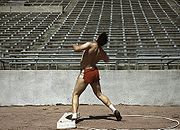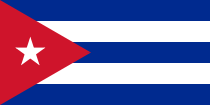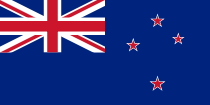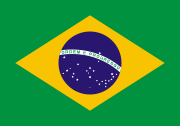Shot put

Shot putter, University of Nebraska, 1942
The shot put is a track and field event involving "putting" (throwing in a pushing motion) a heavy metal ball (called the shot) as far as possible. It is common to use the term "shot put" to refer to both the shot itself and to the throwing motion.
Competitions and rules
Competitors take their throw from inside a circle 2.135 m (7 feet) in diameter, with a stopboard approximately 4 inches (10 cm) high at the front of the circle. The distance thrown is measured from the inside of the circumference of the circle to the nearest mark made by the falling shot in the soil.
Rules
- Upon calling the athlete's name, he/she has 60 seconds to begin the throwing motion.
- The athlete may not wear gloves. Under NFHS (US high school) and NCAA rules, the athlete may not tape his/her fingers, except to cover a cut or open wound; however, USATF and IAAF rules permit the taping of individual fingers.
- The athlete must rest the shot close to the neck and keep it tight to the neck while throwing.
- Athlete is allowed to touch the inside surface of the circle or stopboard but must not touch the top or outside of the circle or stopboard.
- Shot must land in the legal sector (34.92°) of the throwing area.
- Athlete must exit the throwing circle from the back.
Foul throws occur when an athlete:
- Does not pause within the circle before beginning the throwing motion.
- Does not begin the throwing movement within 60 seconds of having his or her name called.
- Allows the shot to drop below his shoulder or outside the vertical plane of his shoulder during the put.
- Touches with any part of the body (which includes shoes), during the throw:
- the top or ends of the stopboard
- the top of the iron ring
- anywhere outside the circle.
- Throws a shot which either falls outside the throwing sector or touches a sector line on the initial impact.
- US high school (NFHS) rules only:
- Does not wait in the circle until the shot has landed and the official calls "Mark."
- Does not leave the circle under control.
- NCAA/USATF/IAAF rules: Leaves the circle before the shot has landed.
- Does not exit from the rear half of the circle.
Myths. The following are either obsolete or non-existent rules:
- The athlete must enter the circle from the back (none of the rule books contain such a clause).
- It is a foul if an athlete enters the circle, then exits and reenters the circle prior to starting the throw (all the rule books allow an athlete to leave a circle prior to starting a throw, but this still counts against the one minute time limit; the allowable method of exiting the circle varies by rule book)
- It is a foul if loose clothing, shoelaces or long hair touch outside the circle during a throw, or an athlete brings a towel into the circle and then tosses it out prior to the throw (these are no longer rules or never were rules - none of these actions provide unfair advantage to the thrower).
Competition
Each competition has a set number of rounds of throws. Typically there are 3 rounds of preliminaries to determine seats for the final, and three more rounds are given in the final. Each competitor is credited with his/her longest throw, regardless if that was achieved in the preliminary or final rounds. The competitor with the farthest legal put is declared the winner.
In open US and international competition, the men's shot weighs 7.260 kilograms (16 lb), and the women's shot weighs 4 kg (8.82 lb). American high schools, under NFHS rules, use 12 pounds (5.44 kg) shots for boys and 4 kg shots for girls. In US Masters and World Masters competition the following shots are used:
| Age |
Men |
Women |
| 35-49 |
7.260 kg |
4 kg |
| 50-74 |
|
3 kg |
| 50-59 |
6 kg |
|
| 60-69 |
5 kg |
|
| 70-79 |
4 kg |
|
| 75+ |
|
2 kg |
| 80+ |
3 kg |
|
In international youth competition, 16-17 year-old boys use the 5 kg shot, and 18-19 year-old boys use the 6 kg shot. Girls use the 4 kg shot in these categories.
Shot put competitions have been held at the Summer Olympic Games since their inception, and is also included as an event in athletic world championships. The shot put originates from Highland games 'stone put' where competitors put a rounded cube, stone, or metal form of considerable weight from behind a given line. Cannon ball throwing contests were organised in 17th century England.[1] Although Scottish athletics has an analogous event, this does not necessarily indicate a common origin.
Putting styles
Two putting styles are in current general use by shot put competitors: the glide and the spin.
The origin of the 'glide' dates to 1951, when Parry O'Brien of the United States invented a technique that involves the putter facing backwards, rotating 180 degrees across the circle, and then tossing the shot. With this technique, a right-hand thrower begins facing the rear of the circle and kicks to the front with the left leg while pushing off forcefully with the right. The key is to move quickly across the circle with as little air under the feet as possible, hence the name "glide". As the thrower crosses the circle, the hips twist toward the front, followed by the shoulders and strikes in a putting motion with their arm.
In 1972 year Aleksandr Baryshnikov set his first USSR record by using a new putting style. [2] [3] In 1976 Aleksandr Baryshnikov set a world record with "spin" style and first time crossed 22 metres bound. That "spin" style ("круговой мах" in Russian) was invented by his coach Viktor Alexeyev. [4][5]
The spin was also invented in the United States in 1976 . From this, in 1976, Brian Oldfield popularized the spin technique which involves rotating like a discus thrower and using rotational momentum for power. Oldfield set the record of 75 feet (23 m) in 1975; it was unofficial, however, because he was a professional at a time when the IAAF had an amateur-only policy, but undisputed and over 3 feet better than the official world record at the time. Oldfield's record in the 33 years since has been bettered by only 10+1⁄4 inches (0.26 m). In the spin, a right-handed thrower faces the rear, and begins to spin on the ball of the left foot. The thrower comes around and faces the front of the circle and drives the right foot into the middle of the circle. Finally, the thrower reaches for the front of the circle with the left foot, twists his hips and shoulders like in the glide, and puts the shot.
With all putting styles, the goal is to release the shot with maximum forward velocity at an angle of approximately forty degrees. Currently, most top male shot putters use the spin, but the glide remains popular, especially at the amateur level and among women, since the technique breeds higher consistency for the athlete as opposed to the rotational technique. It is worth noting that the world record by a male putter (Randy Barnes 75 ft 10¼ in (23.120 m) was completed with the spin technique, while the close second-best all-time distance (Ulf Timmermann 75 ft 8 in (23.063 m) was completed with the glide technique. The U.S. high school record for the 12-pound shot, 81 ft 3½ in (24.778 m) by Michael Carter, was also completed with the glide technique. Measuring which technique can provide the most potential is difficult, as many of the best throws recorded with each technique come from athletes under a thick cloud of doping suspicion and violations. In some opinions the decision to glide or spin should be based on the thrower's size and power, with short throwers benefiting from the spin and taller throwers benefiting from the glide, but many throwers do not follow this guideline. Almost all throwers start by using the glide.
World records
The current world record holders are:
| Type |
Athlete |
Distance |
Venue |
Date |
| Men |
| Outdoor |
Randy Barnes[6] |
23.12 m (75 ft 10.2 in) |
Westwood, California, USA |
May 20, 1990 |
| Indoor |
Randy Barnes |
22.66 m (74 ft 4.1 in) |
Los Angeles, California, USA |
January 20, 1989 |
| Women |
| Outdoor |
Natalya Lisovskaya[7] |
22.63 m (74 ft 2.9 in) |
Moscow, USSR |
June 7, 1987 |
| Indoor |
Helena Fibingerová |
22.50 m (73 ft 9.8 in) |
Jablonec, CZE |
February 19, 1977 |
Continental records
Records by event - Shot put. IAAF. Retrieved on 2009-05-10.</ref>
| Area |
Men's |
Women's |
| Distance |
Athlete |
Nation |
Distance |
Athlete |
Nation |
| Africa |
21.97 m |
Janus Robberts |
 South Africa South Africa |
18.35 m |
Vivian Chukwuemeka |
 Nigeria Nigeria |
| Asia |
21.13 m |
Sultan Abdulmajeed Al-Hebshi |
 Saudi Arabia Saudi Arabia |
21.76 m |
Meisu Li |
 China China |
| Europe |
23.06 m |
Ulf Timmermann |
 East Germany East Germany |
22.63 m WR |
Natalya Lisovskaya |
 Soviet Union Soviet Union |
North and Central
America, and Caribbean |
23.12 m WR |
Randy Barnes |
 United States United States |
20.96 m[A] |
Belsy Laza |
 Cuba Cuba |
| Oceania |
21.26 m |
Scott Martin |
 Australia Australia |
21.07 m |
Valerie Vili |
 New Zealand New Zealand |
| South America |
21.13 m |
Marco Antonio Verni |
 Chile Chile |
19.30 m[A] |
Elisângela Adriano |
 Brazil Brazil |
Note: A Represents a distance set at a high altitude.[8]
Top 10 performers
Men
| Mark |
Athlete |
Nationality |
Venue |
Date |
| 23.12 |
Randy Barnes |
 United States United States |
UCLA |
May 20, 1990 |
| 23.06 |
Ulf Timmermann |
 East Germany East Germany |
Khania |
May 22, 1988 |
| 22.91 |
Alessandro Andrei |
 Italy Italy |
Viareggio |
August 12, 1987 |
| 22.86 |
Brian Oldfield |
 United States United States |
El Paso |
May 10, 1975 |
| 22.75 |
Werner Günthör |
 Switzerland Switzerland |
Bern |
August 23, 1988 |
| 22.67 |
Kevin Toth |
 United States United States |
Lawrence |
April 19, 2003 |
| 22.64 |
Udo Beyer |
 East Germany East Germany |
Berlin |
August 20, 1986 |
| 22.54 |
Christian Cantwell |
 United States United States |
Gresham |
June 5, 2004 |
| 22.52 |
John Brenner |
 United States United States |
Walnut |
April 26, 1987 |
| 22.51 |
Adam Nelson |
 United States United States |
Gresham |
May 18, 2002 |
Women
| Mark |
Athlete |
Nationality |
Venue |
Date |
| 22.63 |
Natalya Lisovskaya |
 Soviet Union Soviet Union |
Moscow |
June 7, 1987 |
| 22.45 |
Ilona Briesenick |
 East Germany East Germany |
Potsdam |
May 11, 1980 |
| 22.32 |
Helena Fibingerová |
 Czechoslovakia Czechoslovakia |
Nitra |
August 20, 1977 |
| 22.19 |
Claudia Losch |
 West Germany West Germany |
Hainfeld |
August 23, 1987 |
| 21.89 |
Ivanka Khristova |
.svg.png) Bulgaria Bulgaria |
Belmeken |
July 4, 1976 |
| 21.86 |
Marianne Adam |
 East Germany East Germany |
Leipzig |
June 23, 1979 |
| 21.76 |
Li Meisu |
 China China |
Shijiazhuang |
April 23, 1988 |
| 21.73 |
Natalya Akhrimenko |
 Soviet Union Soviet Union |
Leselidze |
May 21, 1988 |
| 21.69 |
Vita Pavlysh |
 Ukraine Ukraine |
Budapest |
August 15, 1998 |
| 21.66 |
Sui Xinmei |
 China China |
Beijing |
June 9, 1990 |
Medal winners
Olympic Games medal winners
Men
Women
World Championship medal winners
Men
Women
Commonwealth Games medal winners
Men
Women
Best year performance
Men's Season's Best
Women's Season's Best
See also
- World record progression shot put men
- World record progression shot put women
- Stone put
- Pundo
References
|
Olympic Champions in Women's Shot Put |
|
1948: Micheline Ostermeyer (FRA) • 1952: Galina Zybina (URS) • 1956: Tamara Tyshkevich (URS) • 1960: Tamara Press (URS) • 1964: Tamara Press (URS) • 1968: Margitta Gummel (GDR) • 1972: Nadezhda Chizhova (URS) • 1976: Ivanka Hristova (BUL) • 1980: Ilona Slupianek (GDR) • 1984: Claudia Losch (FRG) • 1988: Natalya Lisovskaya (URS) • 1992: Svetlana Krivelyova (EUN) • 1996: Astrid Kumbernuss (GER) • 2000: Yanina Karolchyk (BLR) • 2004: Yumileidi Cumbá (CUB) • 2008: Valerie Vili (NZL)
|
|
|
Olympic Champions in Men's Shot Put |
|
1896: Robert Garrett (USA) • 1900: Richard Sheldon (USA) • 1904: Ralph Rose (USA) • 1908: Ralph Rose (USA) • 1912: Patrick McDonald (USA) • 1920: Ville Pörhölä (FIN) • 1924: Clarence Houser (USA) • 1928: John Kuck (USA) • 1932: Leo Sexton (USA) • 1936: Hans Woellke (GER) • 1948: Wilbur Thompson (USA) • 1952: Parry O'Brien (USA) • 1956: Parry O'Brien (USA) • 1960: Bill Nieder (USA) • 1964: Dallas Long (USA) • 1968: Randy Matson (USA) • 1972: Władysław Komar (POL) • 1976: Udo Beyer (GDR) • 1980: Vladimir Kiselyov (URS) • 1984: Alessandro Andrei (ITA) • 1988: Ulf Timmermann (GDR) • 1992: Mike Stulce (USA) • 1996: Randy Barnes (USA) • 2000: Arsi Harju (FIN) • 2004: Yuriy Bilonoh (UKR) • 2008: Tomasz Majewski (POL)
|
|
|
World Champions in Men's Shot Put |
|
|
1983 Edward Sarul • 1987 Werner Günthör • 1991 Werner Günthör • 1993 Werner Günthör • 1995 John Godina • 1997 John Godina • 1999 C. J. Hunter • 2001 John Godina • 2003 Andrei Mikhnevich • 2005 Adam Nelson • 2007 Reese Hoffa • 2009 Christian Cantwell
|
|
|
Events in the sport of athletics |
|
| Track and field · Road running · Race walking · Cross country running |
|
| Track |
| Sprints |
50 m · 55 m · 60 m · 100 m · 150 m · 200 m · 300 m · 400 m · 500 m |
|
| Hurdles |
50 m · 55 m · 60 m · 100 m · 110 m · 400 m
|
|
| Middle distance |
800 m · 1500 m · 3000 m · Steeplechase
|
|
| Long distance |
5000 m · 10,000 m · One hour run
|
|
| Relays |
4 × 100 m · 4 × 200 m · 4 × 400 m · 4 × 800 m · 4 × 1500 m · Distance medley relay · Sprint medley relay · Swedish relay
|
|
|
| Field |
|
|
| Combined |
|
|
| Road |
Running: 5K · 10K · 10-miles · 20K · Half marathon · Marathon · Ekiden | Walking: 10 km walk · 20 km walk · 50 km walk
|
|
| See also: Multiday race · Ultramarathon · Wheelchair racing · Backward running |
|
